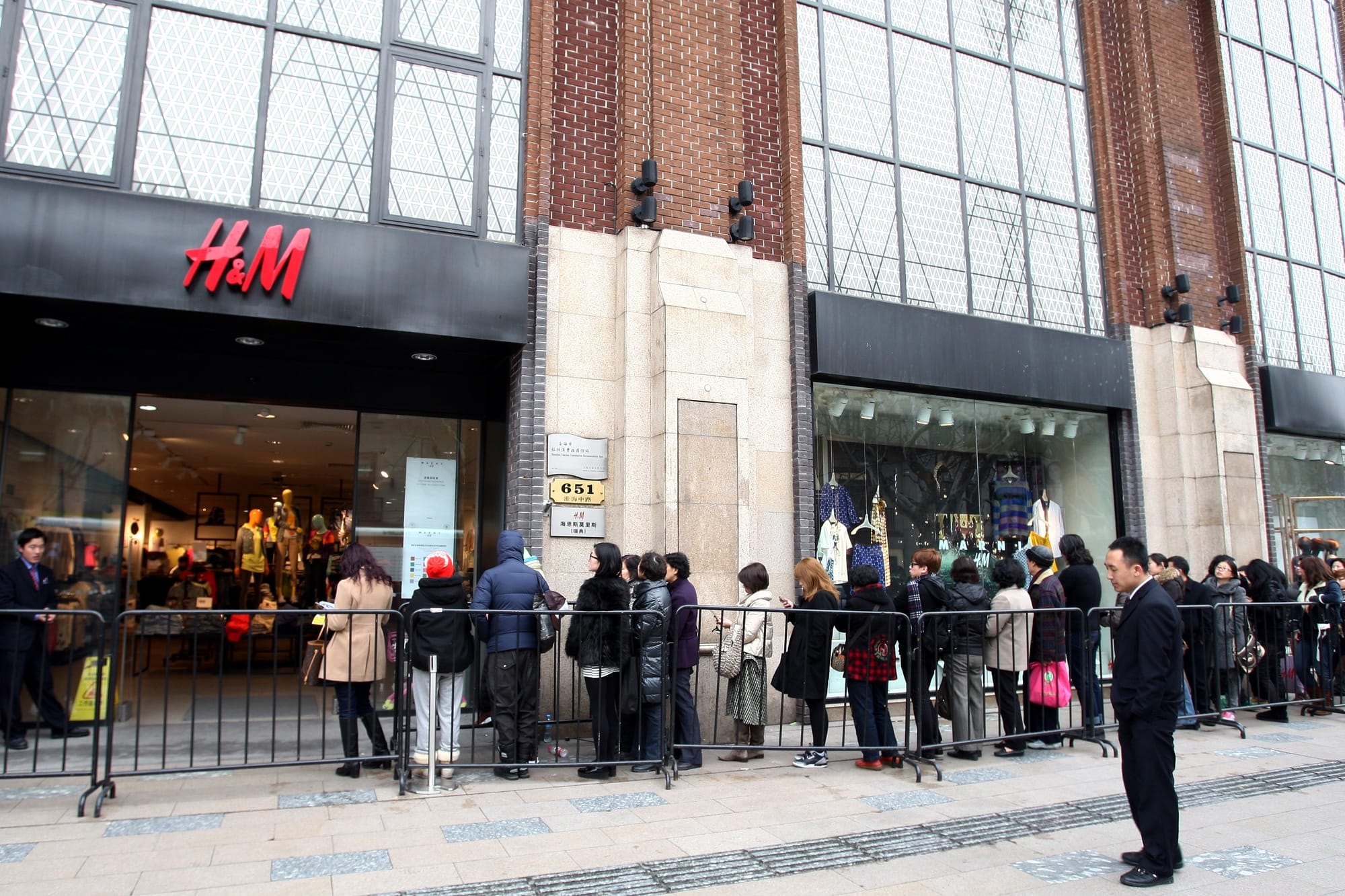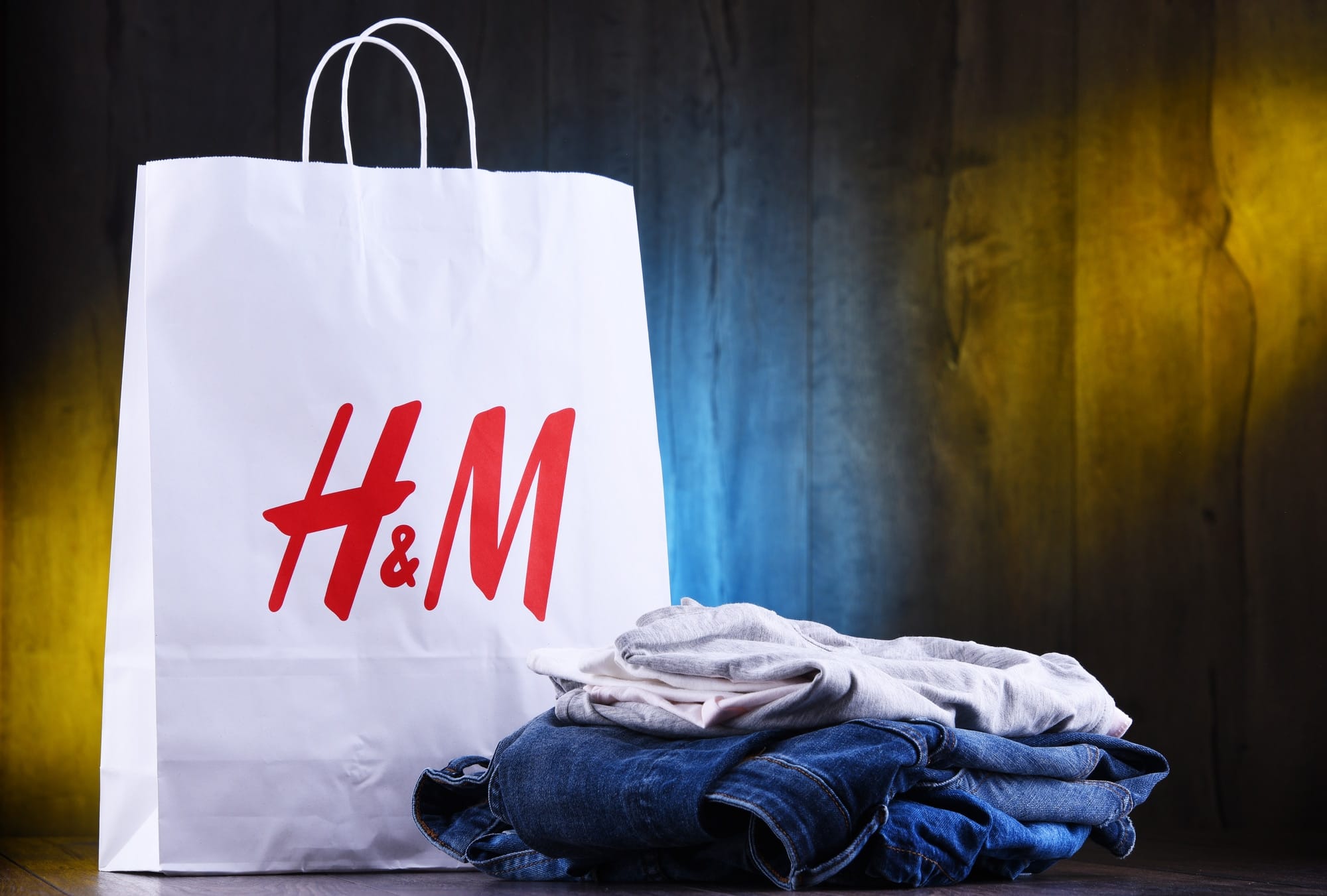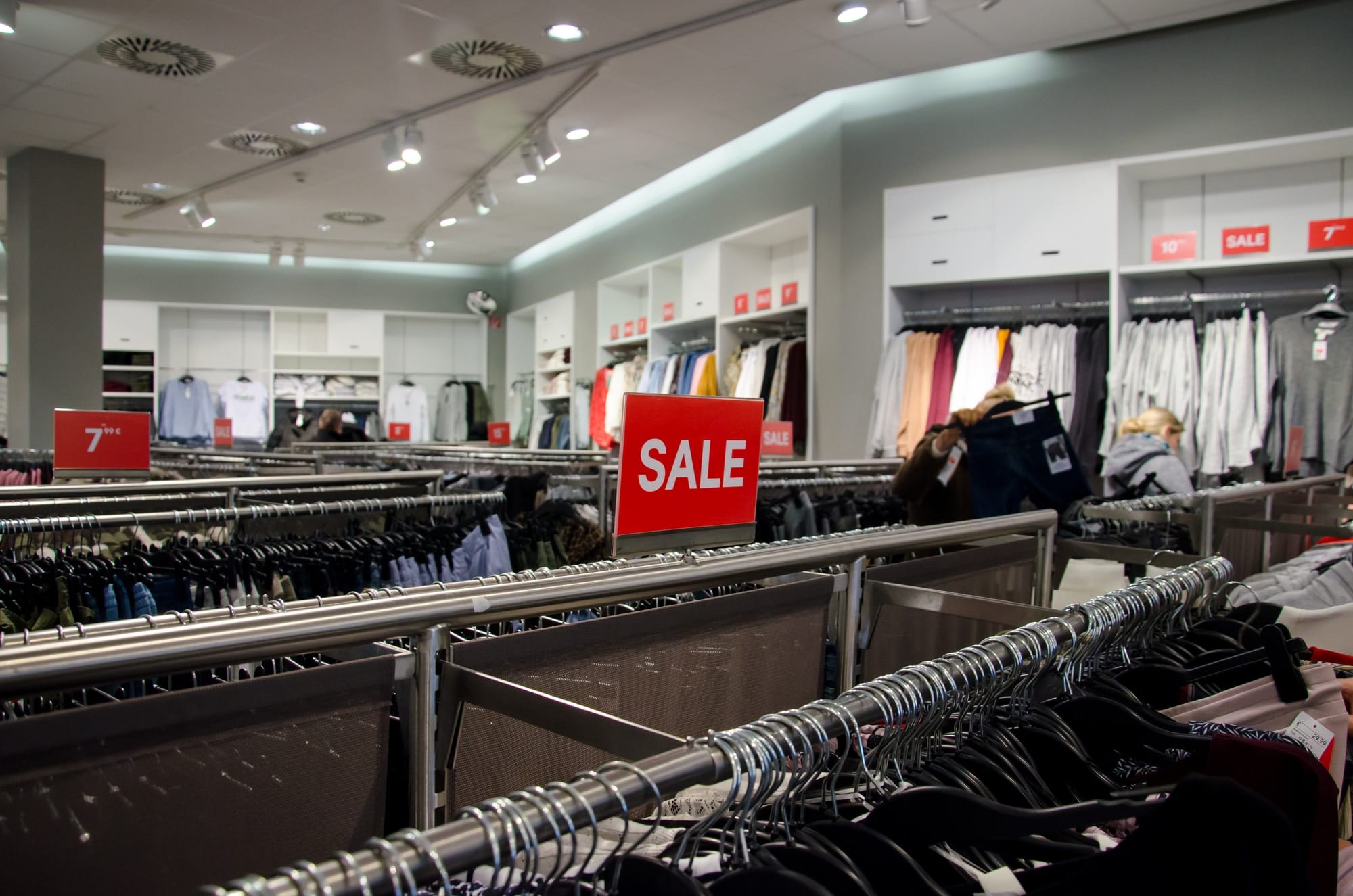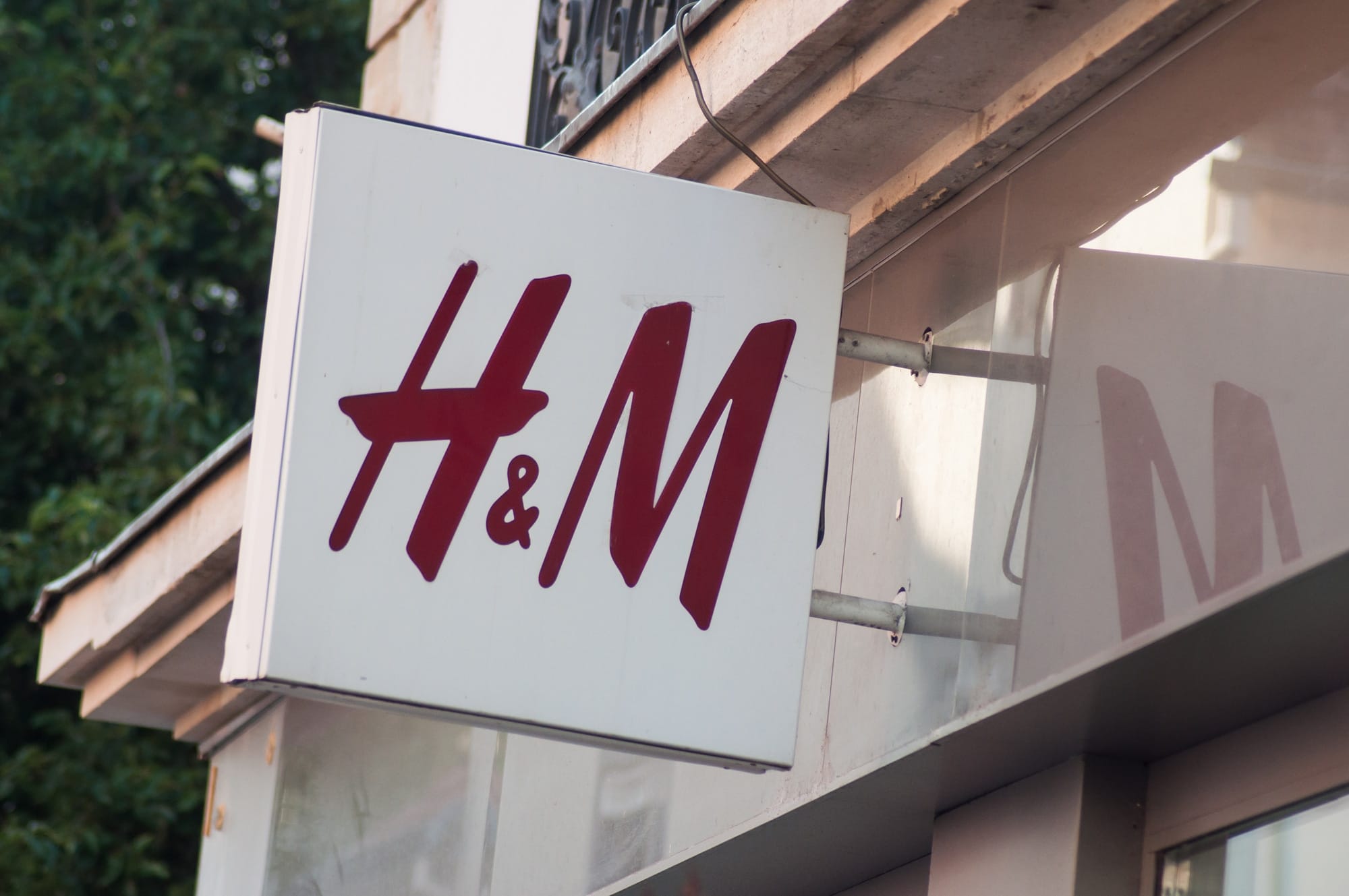It doesn’t matter if you’re a fashion junkie by heart or not, you must have heard the brand name H&M; one of the most notorious fast-fashion brands, Hennes & Mauritz AB is a Swedish brand which produces and sells clothes for teenagers, children as well as adult men and women. The company was started by Erling Persson in 1947 in the city of Västerås, Sweden but now is run by his son Stefan Persson who is the chairman, and Helena Helmersson who is the CEO and President. The headquarters are in Stockholm.
The brand has a very interesting origin story. Originally it was called Hennes which translates to “Hers” in Swedish, thereby meaning that their product line was exclusive to women’s clothing only. Later in 1968, Mr. Persson took over another clothing business which went by the name of Mauritz Widforss. This acquisition led to the introduction of men’s clothing as well and the name we now know as H&M.
As of 2019, we know that H&M has 5,076 stores spread around in 74 countries with a total of 126,000 employees. It is the second-largest clothing retailer in the world. If you want to know more about the brand in depth, we have an H&M PESTLE Analysis for you ahead which will explain the brand from a business perspective.

Political
It is no secret that H&M is a global brand operating in a lot of countries. Where on one hand this is a huge gain for the brand, on the other it also is a gateway to political tensions around the world; countries like Turkey, Egypt and Lebanon etc. where H&M has franchises have very unstable and unpredictable political climates.
Another change in strategy that the brand introduced was franchising; they now have franchises in many countries some of which have political instability thereby keeping the brand on its toes at all times. Franchising was not a part of H&M’s growth strategies in the past.
They got into franchising to curb regulatory disputes of different countries. Every country has its own set of rules and requirements that international businesses must adhere to, such as trade legislations and consumer protection policies. So as long as the world politics remain stable (which is wishful thinking) H&M has their work cut out for them.
Economic
Like any other business, the Covid-19 pandemic has been bad for H&M as well. Consumer purchasing behavior has changed drastically ever since the virus spread because the supply chains were drastically affected. The world faced an economic recession in light of this disease.
For quite some time, approximately 80% stores of H&M were closed down because of the lockdown situation in many countries which naturally caused them to lose 18% of their net sales in 2020. However the brand did play it smart by focusing intensively on online selling during this difficult time, which couldn’t completely eradicate the loss but it kept them on their feet.
Besides this, the US dollar currency rates always remain a threat for H&M. Brexit was another incident that adversely affected the sales of the brand. That's because, although it was expected that the US dollar would fall down, they increased taxation on their imports which made it very expensive for the people in the US to purchase H&M.
The import laws, duties, inflation and currency fluctuations in different countries also lead to uncertainty for the brand. H&M has to be very cautious with their pricing policies in every country they operate in in order to have an edge over competition, such as Zara or Ralph Lauren.
Socio-Cultural
The brand has been affected by the pandemic so they understand how important it is to be careful of the people and the environment around. H&M foundation donated US $500,000 to WHO in order to counter the devastation caused by Covid-19. This foundation also helped people particularly women in Bangladesh who were one of the most affected groups by the pandemic because they work for the ready-made garment sector.
As today’s consumers have become increasingly aware and learned, hence much more conscious of the businesses they support, brands have had to prioritize sustainability in their operations and activities over the years. H&M has been very successful in not only identifying this need but also adapting to it; they have received recognition for their CSR activities. In 2018 their sustainability report won them a place as the first runners-up for the best report award.
H&M is known to take care of their employees at every level by paying fair wages. They are also known for their efforts in promoting gender equality by giving many women the opportunity to work for them. In fact, they have more women working at senior level positions than they do men because they want to give opportunities to women.
The brand has a very prominent social media presence on all the mainstream applications; they even have separate pages dedicated to the countries they operate in. Some very big names such as David Beckham, Kevin Hart, and Naomi Campbell have collaborated with the brand on various campaigns. H&M has managed to keep themselves up to date with all the latest trends and fashion requirements to remain competitive. The best part about the brand is that they provide an affordable solution to many people who want to look chic on a budget.
Being budget-friendly is a double-edged sword because many people take them to produce sub-par quality products. H&M has been able to downplay this stereotype by collaborating with many notorious designers to make collections of high-end clothes as well.

Technological
For a very long time, the owner of H&M was keen on improving their existing supply chain by introducing the latest technology trends in order to make it far more efficient. They finally made huge investments on this matter in 2020 and they paid off quite well. They have recently opened a brand new high-tech logistics center in the UK. This center will become the road map for more to follow.
Other than this they constantly work with technology to improve the overall customer experience and satisfaction. They want their processes to be smooth, quick, and hassle-free. Recently in 2020, they introduced a feature for “Wechat” users in China who also had H&M memberships to be able to purchase products without paying immediately; they have an option to pay later if they don’t have the cash on hand. This feature was also launched in Spain and a total of 12 other countries. H&M plans to normalize this option for customers all around the world.
Their mobile application also has a rewards system which gives customers points on each purchase. These points can then be used to purchase gifts and other products.
In countries where it is possible, they offer instant express deliveries which bring customers their orders within 24 hours. Their stores in Italy and Sweden use climate-friendly ways to deliver the products to customers. In the Netherlands, some stores also give the option of buying or returning products through people traveling on bicycles.

Legal
On 1st October of 2020, H&M was fined €35,258,707.95 which is approximately US $41.2 million by the Hamburg Commissioner for Data Protection and Freedom of Information. This fine was directed towards their subsidiary in Hamburg, Germany because it was revealed that a huge chunk of their employee data was leaked to the general public. Sensitive information consisting of their personal and private details was dealt with carelessly. The employees were regularly interrogated on their whereabouts and activities in order to collect this information.
Recently the brand came under fire with allegations of discrimination against ethnic minorities in certain stores in Sweden. Hidden camera footage which was popularized by a local news channel made it seem that the salespeople were very different in their treatment against people of different ethnicities especially ones who were returning some products such as asking for unnecessary documentation from them which was not being asked of other people. The matter was inquired in detail.
H&M has been tied to racial discrimination quite a few times in the past as well such as when a manager and a few employees were fired because they changed the name of a product in the store to include a racial slur. Appropriate legal action was also taken against them.
It’s not all bad with the brand though; H&M adheres strictly to world laws especially in regards to the countries they operate in. They don’t allow underage employment, the suppliers they work with also are law-abiding, they ensure safe working conditions for their employees all around the world, they promote equality against discrimination of any form; racial, gender, ethnic, religious, etc. The brand also believes in being transparent; they develop and produce many financial as well as other performance reports to the public.
Environmental
The fashion industry relies heavily on weather conditions in the countries fashion products are sold. This is why H&M sends relevant products to the different countries where they have stores, so as to minimize wastage and to curb costs. However, as per the recent climate changes and the weird shifts in weather observed around the globe, H&M now has a tough time accurately forecasting the emerging weather conditions in order to send the required supply of clothes.
The fashion industry is one of the most environmentally taxing industries to exist because its production processes heavily pollute the surroundings. H&M also contributes to this pollution however, they are aware of it. It is one of H&M’s long-term strategic goals to become 100% sustainable i.e. recyclable in 2030. This means that they would reuse and recycle all of their products produced instead of harboring new raw materials.
In the year 2020, H&M groups were ranked as the most sustainable consumer goods company by the Dagens Industri in Sweden. They also scored the third position in 2020’s cotton sustainability ranking. They also got recognition by being a part of the top 16 companies to switch to using more sustainable raw materials by the Material Change Index in 2019.

H&M PESTLE Analysis: Conclusion
Now that you have read through the H&M PESTLE analysis you must have a better understanding of where the business currently stands. Whereas on one hand, H&M has many serious issues they need to cater to, such as the global political instability which can be a serious cause of concern for the company’s profits.
Their brand name has been tarnished quite a few times for racial discrimination which alone can be enough to break a brand in these modern times of heightened awareness and sensitivity. Besides it is a terrible thing to hold prejudices against people no matter where they are from. The pandemic has been detrimental to them just like any other business but they have managed to adequately put to use their technological advancements to compensate for the losses, as little as that may be.
Their socio-cultural practices are quite commendable as is their dedication to environmental sustainability. Despite the brand being a part of the problem, they are taking excellent measures to counter their effect on the environment. Overall, it is safe to assume that H&M is not going anywhere anytime soon, with a few tweaks and changes they can become even more successful.
In order to fully understand a company in-depth, it is important to know about the external macro-economic factors along with the internal factors of a company. These external factors have a very big impact on any company’s overall performance. A PESTLE Analysis is a tool that achieves exactly this; a detailed overview of a company’s performance in light of external macro-economic factors.
An acronym for Political, Economic, Socio-cultural, Technological, Legal and Environmental factors, this analysis helps in understanding as well as forecasting how a company will perform in the future.
If you want to learn how to do a PESTLE analysis yourself, you can visit our website where we explain the process in exquisite detail. In fact, you can also look at the PESTLE Analysis template if you want to get right to work on one.










